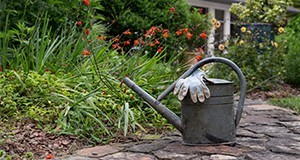Abstract
Florida has an abundance of water, but still faces an increased pressure on water resources because of a growing population, prosperous tourism, and an active agricultural industry. This 5-page fact sheet is the first in a series discussing how Extension can improve high water users' engagement in water conservation by focusing on high water users' characteristics, experiences with water issues, and perceptions of water. Written by Pei-wen Huang and Alexa J. Lamm, and published by the Department of Agricultural Education and Communication, July 2016.
References
Barnett, C. (2007). Mirage: Florida and the vanishing water of the Eastern U.S. Ann Arbor, Michigan: The University of Michigan Press. https://doi.org/10.3998/mpub.187043
Davis, S. L., & Dukes, M. D. (2014). Methodologies for successful implementation of smart irrigation controllers. Journal of Irrigation and Drainage Engineering. Retrieved from http://ascelibrary.org/doi/pdf/10.1061/%28ASCE%29IR.1943-4774.0000804
Haley, M., Dukes, M., & Miller, G. (2007), Residential irrigation water use in Central Florida. Journal of Irrigation and Drainage Engineering, 133, 427-434. https://doi.org/10.1061/(ASCE)0733-9437(2007)133:5(427)
Huang, P., & Lamm, A. J. (2015). Impact of experience and participation in Extension programming on perceptions of water quality issues. Journal of International Agricultural and Extension Education, 22(3). doi:10.5191/jiaee.2015.22303 https://doi.org/10.5191/jiaee.2015.22303
Huang, P., Lamm, A. J., & Dukes, M. (2016). Informing extension program development through audience segmentation: Targeting high water users. Journal of Agricultural Education, 57(2), 60-74. doi: 10.5032/jae.2016.02060 https://doi.org/10.5032/jae.2016.02060
Israel, G. D., & Knox, G. W. (2010). Reaching diverse homeowner audiences with environmental landscape programs: Comparing lawn service users and nonusers (AEC363). Gainesville: University of Florida Institute of Food and Agricultural Sciences. Retrieved September 4, 2014, from http://edis.ifas.ufl.edu/WC04400
Kotler, P., & Roberto, E. L. (1989). Social marketing. Strategies for changing public behavior. New York, NY: The Free Press.
Marella, R. (2013). Water use in Florida, 2005 and trends 1950-2005. U.S. Geological Survey. Retrieved from http://pubs.usgs.gov/fs/2008/3080/ https://doi.org/10.3133/fs20083080
Monaghan, P., Ott, E., Wilber, W., Gouldthorpe, J., & Racevskis, L. (2013). Defining audience segments for extension programming using reported water conservation practices. 51(6). Retrieved from http://www.joe.org/joe/2013december/a8.php
University of Florida IFAS Extension. (2016). Water. Retrieved from http://solutionsforyourlife.ufl.edu/environment/water_resources.html

